
11 minute read
I 5 Most Valuable Electric Car Brands 2021
Wheels
5 Most Valuable Electric Car Brands 2021
Advertisement
Excluding automotive powerhouses that have launched EV lineups, the top five EV brands had a combined market value of $923 billion as of September 17, 2021.
Global car sales witnessed a 16% decline last year, according to the International Energy Agency, but on the sustainable front, 2020 was a record-setting year for electric vehicle sales, which recorded a year-onyear growth of 40%. As mainstream automakers join the electric car race, the brands exclusively producing allelectric vehicles are catching up, with some EV companies ranking among the world’s most valuable car firms. Here are the world’s top five.
Tesla
Country: U.S. Market value: $760.8 billion
EV deliveries in H1 2021: 386,181 EV deliveries in 2020: 499,550 Cofounded by billionaire Elon Musk in 2003, Tesla continues to dominate the global EV market with a 15% market share as of H1 2021, according to Canalys. The Silicon Valley firm’s net income breached the $1 billion-mark for the first time in its history during the second quarter of 2021. The company’s Shanghai Gigafactory in China now serves as Tesla’s primary vehicle export hub. Despite its Berlin Gigafactory facing environmental concerns and strict German regulations, Tesla says it remains on track to begin building its bestselling Model Y vehicles in its European plant in 2021.

NIO
Country: China Market value: $61.5 billion
EV deliveries in H1 2021: 41,956 EV deliveries in 2020: 43,728 As China’s pioneer in smart electric vehicles, NIO has now started tapping new markets far from home. In July, NIO shipped a batch of its EVs to Norway for the first time, starting with the ES8 model, its flagship smart electric SUV. NIO went public on the New York Stock Exchange in September 2018, and raised $1 billion in its IPO less than a year since it began accepting EV orders in December 2017. Its billionaire founder William Li, dubbed the “Elon Musk of China,” holds nearly 14% stake in the Shanghai-based company. In March 2021, the company filed for a second listing in Hong Kong.
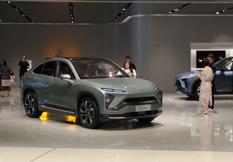
Lucid Motors
Country: U.S. Market value: $37.2 billion
EV deliveries in H1 2021: N/A EV deliveries in 2020: N/A Although its first luxury electric car is yet to hit the market, Lucid Motors’ valuation already far exceeds those of other mainstream automakers, following its $4.4 billion IPO through a merger with blank-check company Churchill Capital in July. Saudi Arabia’s Public Investment Fund is one of Lucid’s early backers, having injected $1 billion into the company in 2018, and owns about two thirds of the California-based firm. CEO Peter Rawlinson, a former staffer of Tesla, revealed to Forbes in a May 2021 interview that Lucid plans to build its cars at its first manufacturing plant in Saudi. Lucid Air, its first EV offering and a vying rival to Tesla, has a price tag of $169,000. The company said it has over 11,000 paid reservations for its Lucid Air.
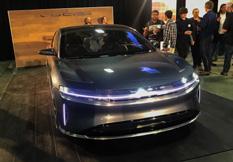
XPeng
Country: China Market value: $33.4 billion
EV deliveries in H1 2021: 30,738 EV deliveries in 2020: 27,041 Founded by Chinese billionaire He Xiaopeng in 2014, EV maker XPeng was listed on the New York Stock Exchange last year and raised $1.5 billion in its IPO. The Guangzhou-headquartered company exceeded its 2020 deliveries after hitting record highs during the first six months of the year. It further forecasts up to 22,500 more deliveries in Q3 2021. XPeng ended H1 with its successful debut on the Hong Kong Stock Exchange for its second listing, and raised $1.8 billion. The company is set to begin deliveries of its P5 smart family sedan model in Q4 2021, which the company claims is the world’s first mass-produced light detection and ranging (LIDAR) equipped Smart EV.
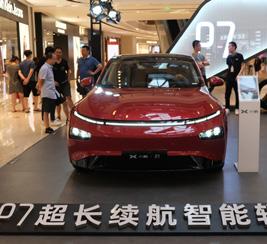
Li Auto
Country: China Market value: $30 billion
EV deliveries in H1 2021: 30,154 EV deliveries in 2020: 32,624 Beijing-based Li Auto was founded by Chinese billionaire Li Xiang in 2015. In November 2019, Li Auto began volume production of its first model Li ONE, a six-seat premium electric SUV. Thanks to the release of its 2021 Li One in May, the company’s second quarter deliveries peaked to a record 17,575. Li Auto has also joined its other EV rivals for a dual listing in Hong Kong this year after a successful $1.1 billion IPO in the U.S. in 2020.
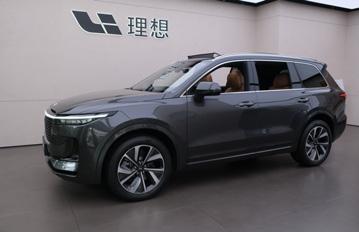
Noha Mokhtar, Head of Customer Service
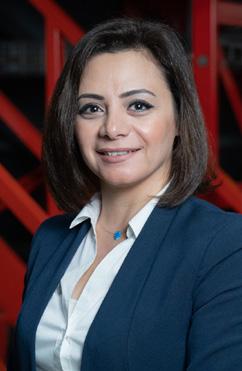
In a world of globalization, digitization, fierce competition, and a pandemic that has caused epic disruption, customer-centricity has taken prime spot on business agendas. Companies have come to realize how critical it is to shift to a more customer-centric approach as a means of differentiation and to build competitive advantage.
Today, with a plethora of knowledge and endless options available at the touch of a button, customer-centricity dictates brand loyalty and profit margins. But how do you go about creating a truly customer-centric business? Well, as obvious as it may seem, you need to start with the customer.
To reach your goals, you must make it your mission to help your customers reach theirs. This means thinking less about how much you are selling and more about how a product or service helps customers thrive. It is important to focus on what your customers want to achieve and to evolve your organization around their needs, so that you become an integral and indispensable ally in their growth journey. This requires a complete change in mindset; you need to shift away from operational thinking and instead place the customer at the heart of the process.
The most important task in developing a customer-centric business is aligning all teams and motivating them to prioritize customer success. To this end, every single person working in a customer-centric organization should be made to feel they have a valuable role to play in the process. This comes down to culture and training to both of which are equally important to cultivating a customer-first mindset and inspiring people to exceed customer expectations.
Commitment from the top is also important and goes beyond simply discussing customer matters in the boardroom. Senior management has to be just as involved in driving customer success as frontline employees. Leaders are responsible for building that culture and driving that momentum internally, while setting an example for all teams to follow.
Today, customers demand tailored solutions and constant innovation. These are not easy demands to meet, and they require continuous client consultation, agility, flexibility, and monitoring of trends. They also require organizations to involve customers in the innovation journey.
Lastly, capturing customer feedback and converting it into tangible improvements is paramount. Customer surveys are very common across businesses, but while they are valuable tools, they are a very static and impersonal way of capturing feedback. Customer-centric companies go one step further: they engage in frequent, direct dialogue, facilitating the exchange of ideas and views because they know that sharing insights and knowledge leads to natural improvements.
Customer centricity requires a fundamental shift in the way a company thinks and operates, but it needs to be approached as an ever-evolving journey, not an end destination. What’s more, companies need to be committed to this route – a route that is no longer an option, but a necessity for business survival.
Scan this QR code to open the website
The Customer, Front and Center
For Noha Mokhtar, Head of Customer Service at DHL Express MENA, a customer-centric approach is essential to gaining competitive advantage and achieving business goals.
www.dhl.com

Electric Meets Luxury
For Martin Schulz, President & CEO of Mercedes-Benz Cars Middle East, the future is progressive luxury, with electric vehicles taking center stage.
How would you describe the electric car market currently and what role do you see Mercedes playing in its evolution? The electric car market is at an exciting stage, with public interest increasing as knowledge of the benefits and capabilities of electric vehicles (EVs) expands and grows. Mercedes-Benz is at the forefront of this new chapter in mobility. Mercedes-EQ, home to the EQS and EQA, is pioneering the progressive luxury concept that will define the market, with these models driving the evolution of EVs in the region.
Regional consumers are in the early stages of electric car adoption. How important do you feel government intervention is in driving this change, and how does Mercedes’ experience from European markets help to address the challenges? Regional governments and the U.A.E. government in particular are supportive of EVs and have moved ahead with plans to increase their numbers through a network of charging stations at key locations, including government departments and malls. In Dubai, legislation has been passed to increase the percentage of electric vehicles operated by government
Martin Schulz, Middle East President & CEO
departments to at least 10% by the end of 2024, rising to 30% from 2030. This aligns with Mercedes’ plan to be electric-only by the end of the decade.
How did the COVID-19 pandemic affect Mercedes sales in the region? Car sales in the region, much like every other sector, were impacted by COVID-19. As consumers were not able to visit showrooms, digitalization was accelerated, making it possible to make a purchase from home. MercedesBenz witnessed a strong recovery after a difficult year and demand for our products and services is strong.
What are the main aims of Mercedes’ Ambition 2039 and how do you plan to achieve them? Ambition 2039 is our path to sustainable mobility. At its core are plans for an electric-only fleet of vehicles by the decade’s end and to be CO2-neutral by 2039. MercedesBenz will have battery electric vehicles in all segments from 2025. To facilitate this, we are significantly accelerating R&D, with investment in battery electric vehicles between 2022 and 2030 amounting to over €40 billion (US$47 billion).
What is the thinking behind launching the EQ range in the compact and the luxury class simultaneously? Mercedes-EQ offers a broad appeal to modern motorists. The EQS is the definition of progressive luxury while the EQA offers customers an entry point into the EV market.
Scan this QR code to open the website
Each demonstrates the flexibility and diverse appeal of the EQ brand. The proven performance, great styling, and advanced features of the EQS, along with the EQA, invite customers to make the switch to EV mobility.
Both models boast exceptional Mercedes-EQ functions, such as MBUX, while the EQS features the visually impressive, easy to operate, and immersive MBUX Hyperscreen. This represents the pinnacle of emotional intelligence and style within the EQ range, with the large, curved screen stretching from the left to the right A pillar and allowing access to a host of entertainment and driver assist functions.
The EQS’s unrivalled position within the EV sector and its standing as the premium choice for motorists seeking electric excellence is defined by its huge range. According to the Worldwide Harmonised Light Vehicle Test Procedure (WLTP), the EQS has a range of up to 770km, that guarantees ease of use, comfort, and confidence on any journey.

Mercedes-EQ has recently become a sub-brand like the AMG or Maybach series. Does this reflect the increased focus on electromobility at Mercedes? Mercedes-EQ and the EQS represent a surge in innovation and technology that position the sub-brand and its premium model as the top choice for EV mobility. Just as AMG is synonymous with motorsports, power, and design, Mercedes-EQ and the EQS will be defined by excellence in electromobility.
The EQ will evolve to become the dominant vehicle sub-brand in line with Mercedes’ EV ambitions; models like the EQS and EQA are already positioned as market leaders in this vibrant and growing segment.
With increased focus on Mercedes-EQ, the EQS will redefine performance within the electric segment with an all-wheel drive system that delivers 516hp, accelerating from zero to 100km/ hour in 5.5 seconds. Mercedes has focused on topend line-ups this year, including Maybach, AMG, and G-Class. Is this focus in response to growing demand for high-end luxury? The Maybach represents extravagant comfort, sophisticated luxury, and ultimate exclusivity. AMG thrills with high-performance, bold styling, and racing heritage. The G-Class remains an icon in the region as a luxury 4x4 that dominates the urban landscape.
These models share a rich history and attract discerning clients who demand only the best from their vehicle of choice, with premium features, incredible looks, and unique attributes required as standard. The concept of EV versions of these models will solidify their appeal for a new generation of customers and help with Mercedes’ ambitions to be electric-only by 2030.
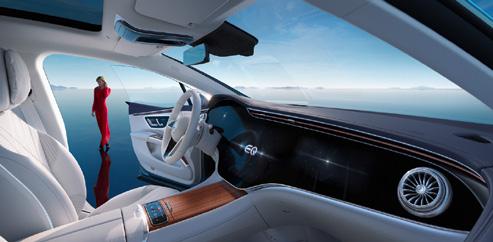
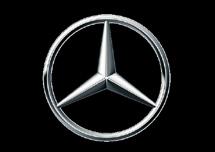
www.mercedes-benz-mena.com










